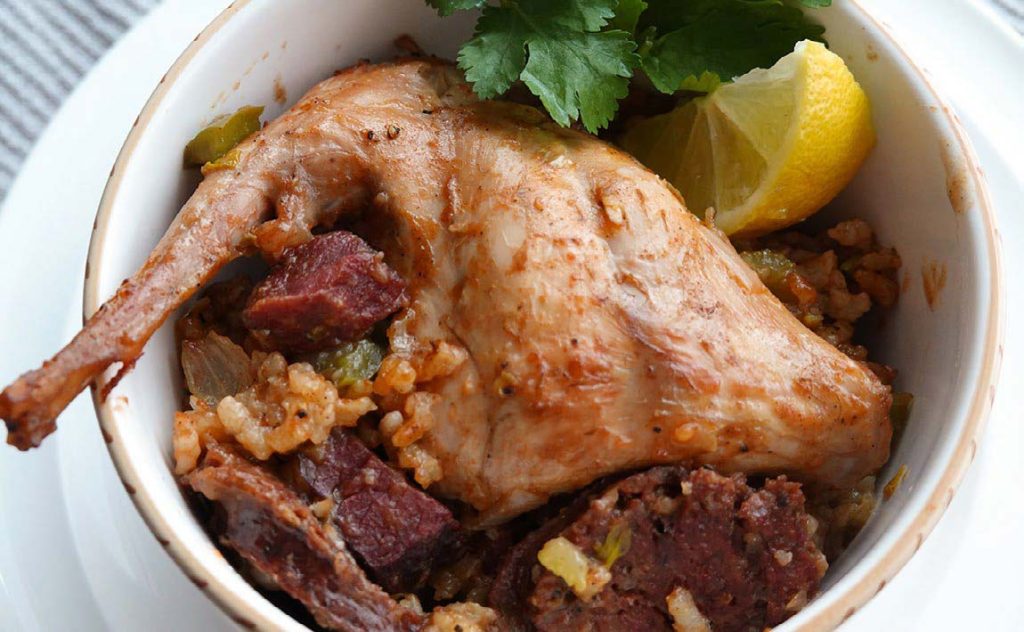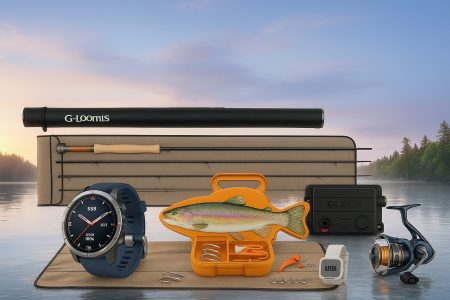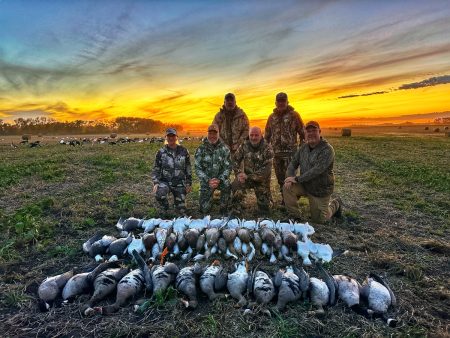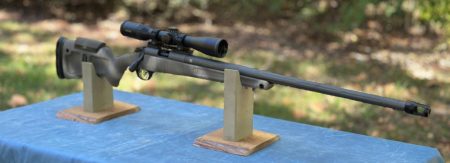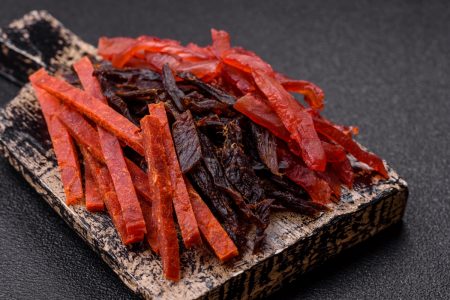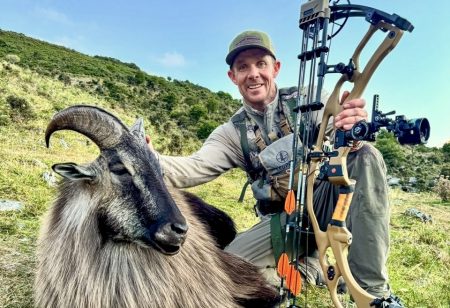Wild fresh and smoked and cured ingredients create a peasant dish fit for a king in this jambalaya recipe.
What is jambalaya, exactly?
Want to start an argument? Suggest that jambalaya should not include shrimp…or, what about tomatoes? Some folks like it with, some without. Jambalaya, like its Spanish cousin paella, is peasant food. (Many of my favorite foods arose from peasant roots.) Jambalaya is a combination of cured meats, sausage, and any number of other things that are handy and delicious.
Many folks believe that jambalaya is what happened to Spanish paella after it immigrated to North America. To confuse things even more, there is evidence that points to French and African influence. Saffron, the major flavor enhancer of paella, would have been tough to get in those early days. The argument goes that the new folks on the ground used tomatoes as a substitute. Other local ingredients found their way into the pot too, but there is always chicken, sausage and seafood.
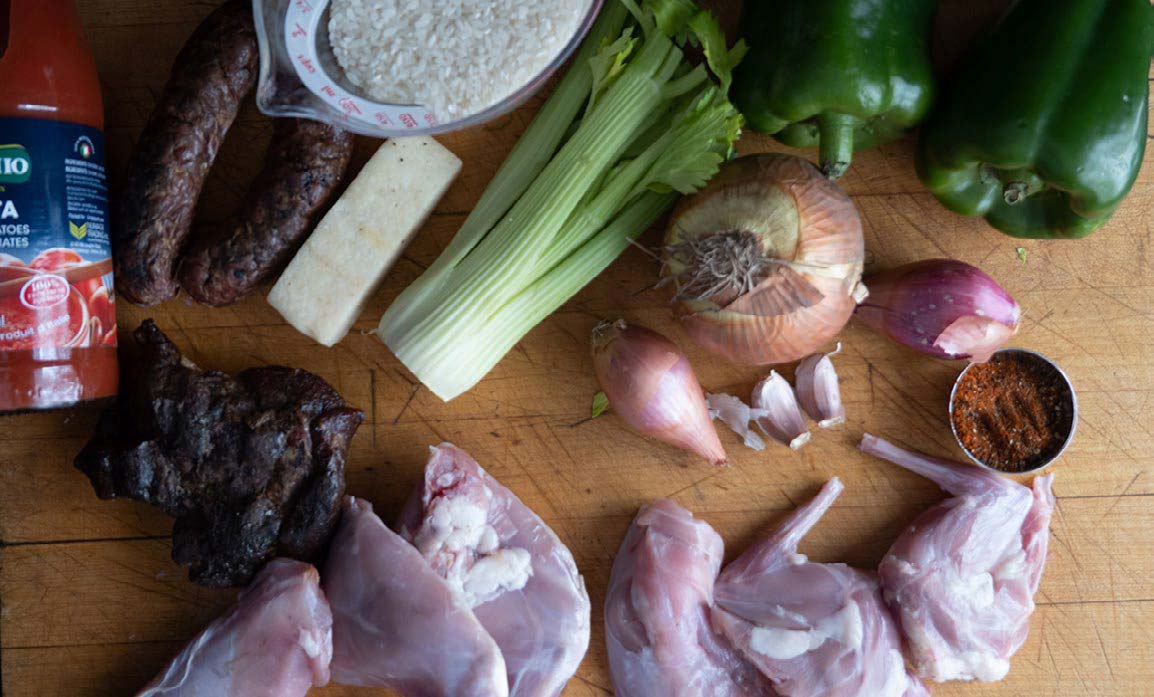
Wildly Local
I thought it would be an interesting challenge to make a wild jambalaya recipe based on the (wild, local) game I collected and processed this past year. Everything meat-wise was acquired within a two-hour drive. Some of these ingredients were frozen fresh, some were smoked and some were cured and smoked. I am still arguing with myself about adding store-bought shrimp. This recipe also includes black bear tasso ham, venison andouille sausage and cottontail rabbit.
Here is another example of why I put a such high value on processed ingredients from game that has been harvested. Having tasso and a selection of sausages on hand creates a tremendous opportunity for combinations and permutations in the kitchen.
This is a simple one-pot-over-the-fire dish. Go ahead, light it up. Feel free to shake it up a bit, changing out the rabbit for squirrel, grouse, goose, duck or wild turkey, and use a different sausage (chorizo comes to mind). Any of those options should work perfectly.
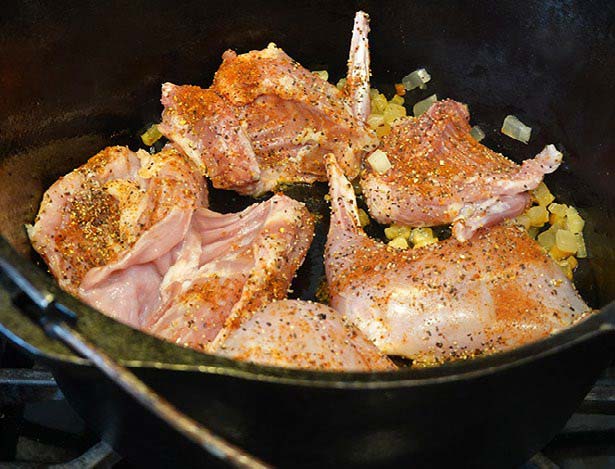
Cast Iron
A cast iron Dutch oven with a tight-fitting lid is the perfect platform to launch your jambalaya. I have cooked a version of this recipe in a Dutch oven slung from a tripod over a fire, on a barbecue grate over a campfire, on my regular range at home and in front of my outfitter tent. In that case, I did so with the Dutch oven lid stacked with coals on top and coals underneath the oven bottom. My guests have reported satisfactory results from every cooking process. I hope your guest will find the same.
Note: Argue origin as you wish, but jambalaya, paella and gumbo are all related one-pot dishes from a peasant past. Like so many of our historical foods, these are all made with regionally available and inexpensive ingredients. And they work great for the campfire cook with a crowd to please. This dish cooked in a Dutch oven pot or one like it is deeply satisfying, whether cooked on an open fire at the end of a long day’s hunt in the winter or prepared on your stove at home. Jambalaya is delicious: there’s no arguing that.
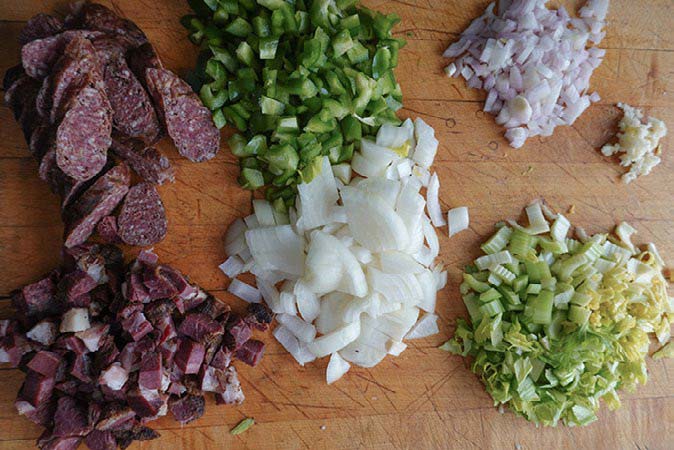
Equipment
- 12-inch Dutch oven with a tight-fitting lid (or similar casserole)
- Cutting board
- French knife
- Vegetable peeler
- Wooden spoon
- Measuring cups or gram-scale
Ingredients
- 2 tablespoons (30 grams) of bear fat or other neutral fat (normally this fat would come from side bacon or pork fatback)
- 1 large yellow onion, peeled and diced medium
- 2 cups (500 ml) celery stalks and leaves, chopped coarsely (or use the green leaves of regular celery)
- 1 green pepper seeded, diced medium
- 2 cloves of garlic, minced
- ½ pound (250 grams) of andouille sausage grilled, cooled and sliced diagonally
- (Chorizo is a good substitute if you haven’t made your spicy marjoram-flavored venison, boar or bear andouille yet.)
- ½ pound (250 grams) of black bear tasso ham, diced
- 1 can (1½ cups or 375 ml) Italian strained tomatoes (passata)
- 1½ cups (375 ml) of medium-grain rice
- 3 cups (750 ml) of hot game stock (chicken stock is a suitable substitute)
- Optional: About a pound (500 grams) of cooked shrimp. Note: there is no shrimp in this recipe. I took it as a personal challenge to use only game meat I had acquired by hunting. (Now, to include shrimp or not is your argument. I was hoping for a selection of northern pike and walleye cheeks to include those as a substitute for shrimp, but we’re fresh out of local fish.)
- Powdered pepper blend or commercial Cajun spice (I make my own with equal parts black peppercorns, white peppercorns, green peppercorns, ancho chilies, guajillo chilies, and for some real kick, add a few Tien Tsin peppers or red Thai chilies. Crush the chilies by hand and pulverize the works in the coffee grinder.)
- Salt (to taste)
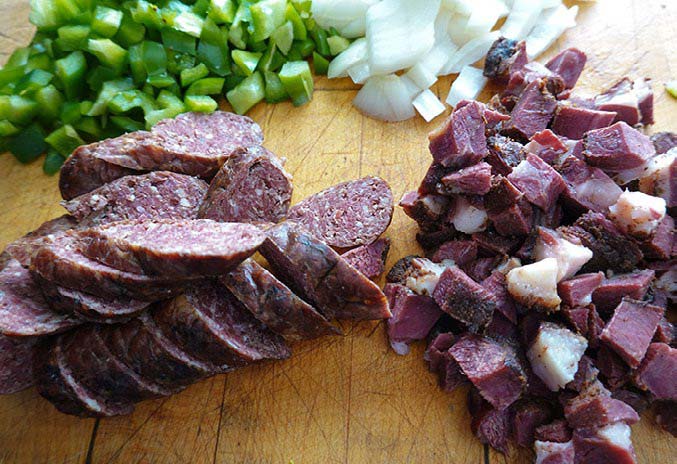
Method
- Collect and prepare all of the ingredients.
- Grill the andouille sausage, chill and slice diagonally.
- Heat the Dutch oven and melt the bear fat.
- Cut up the bone-in rabbit and season with pepper blend. Brown one side, turn and brown the other side.
- Add onions, celery and green pepper.
- Stir every three minutes or so and cook until onions turn translucent and start to brown.
- Add garlic and rice. Sauté for four minutes to coat the rice with fat and until it turns opaque.
- Add chicken stock, stir well and increase the heat to high.
- Add the tomato. Once the works comes to a boil, dial back the heat to a simmer.
- Add diced tasso ham and sliced andouille sausage.
- Cover and simmer, stirring every five minutes.
- At 20 minutes, check the consistency of the jambalaya and add another cup of water if required.
- Taste and correct seasoning with salt.
- When the liquid is absorbed and the rice is tender, the jambalaya is ready to serve.
This Jambalaya Recipe Serves 4-6 people
Note: See Michael Ruhlmans’s book “Charcuterie” for guidance on how to get started with andouille and tasso, substituting black bear for pork to make tasso ham.
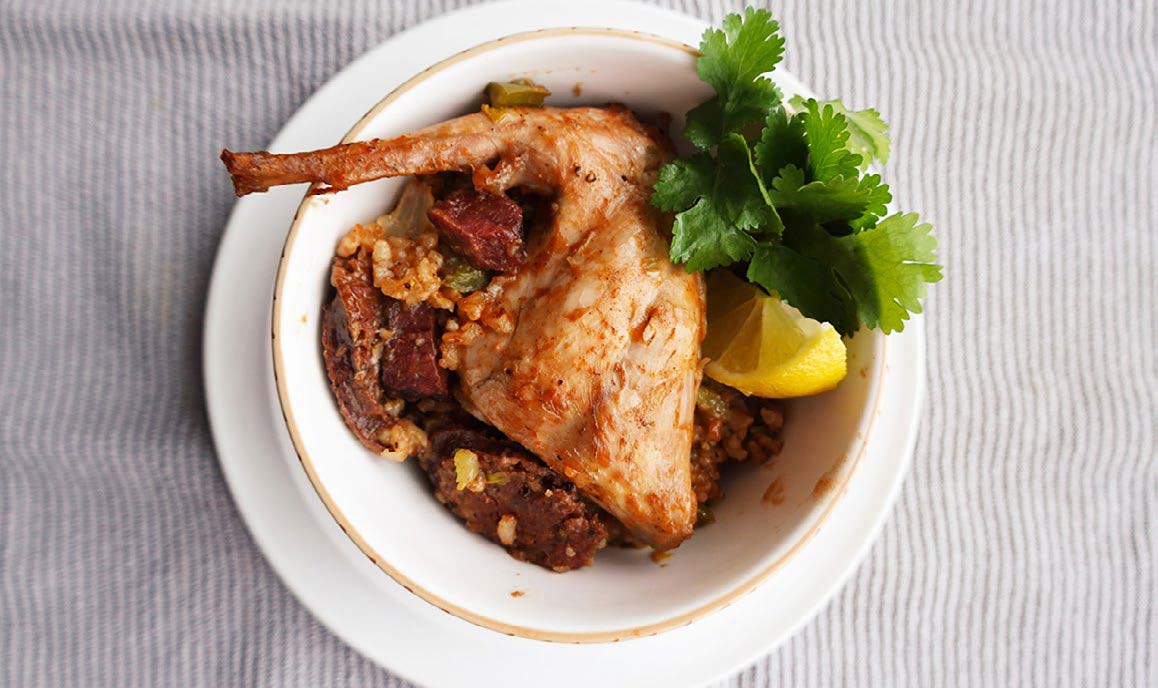
Enjoy that jambalaya recipe? Check out more of our wild game recipes by clicking here!
Per our affiliate disclosure, we may earn revenue from the products available on this page. To learn more about how we test gear, click here.






